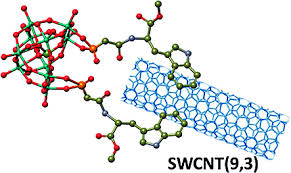Molecular separation of semiconductor metal nanotubes and SWCNT SWCNTs (based on nano-microelectronics PhD)
Researcher and author: PhD student : Afshin Rashid
Note: separation of SWCNTs and SWCNT nanotubes techniques that are most commonly used for chromatography liquid, electro Fvrz or Dyalktrv Fvrz, Rotary and Rotary density gradient (DGC) are.
The separation of semiconductor metal nanotubes is mostly accomplished by the frozen and pressing method. In this way, the frozen agarose gel contains SWCNTs dispersed with SDS, which is wrapped and pressed by hand.
Molecular separation of nanotubes by chromatography
Liquid chromatography is a separation method widely used in chemical and biochemical industries and laboratories . Using DNA, three types of chromatography are performed to isolate SWCNTs:
Intracellular Gel Chromatography (GPC) (20% Ion Exchange Chromatography) (19% Size-Based Chromatography) (SEC (18)
Using the SEC, the separation of the nanotubes is performed well on a length basis. GPC can also be used to classify SWCNTs by length. IEX is mainly used for DNA-complexed nanotubes and is suitable for the separation of metal and semiconductor SWCNTs. By combining IEX and SEC methods, nanotube length separation is made more accurate. The results of SWCNT-DNA separation with IEX are very interesting and scale enhancement is no problem. The disadvantage of this method is the high cost of high purity DNA and the limited lifetime of IEX columns.
Molecular separation of nanotubes by centrifugation
The centrifuge is based on the deposition coefficients of the nanotube in the suspension. The deposition coefficient depends on the density and molecular weight. The interaction of guest molecules with specific SWCNTs enhances the stability of some SWCNTs in the suspension. In this case, a group of nanotubes can be extracted by a simple centrifuge method . Rotary density gradient (DGC) returns separation increases in most cases it has been shown that the DGC density gradient in the tube, Rotary form adjacent layers are formed, while the Rotary two different density of the sediment and dissolved substances is . Using DGC, separation of SWCNTs in addition to type and diameter , based on differences in electrical structure It is possible. In this way, multiple suspension layers with different colors and different populations of nanotubes are obtained. The DGC method is inexpensive and easy to scale .
Molecular separation of nanotubes by gel method
Electrophoresis classifies macromolecules based on their mobility in a gel, capillary tube or solution affected by direct current. . SWCNTs are a specific type of macromolecule that can be isolated by electrophoresis . Conventional electrophoresis, capillary tube electrophoresis and gel electrophoresis have been investigated . Electrophoresis in the capillary tube results in the size-sorting and charge- sorting of SWCNTs, resulting in their general separation based on the electrical structure using conventional electrophoresis . Gel electrophoresis classifies length and diameter. In this method, a piece of agarose gel containing frozen SWCNTs and SDS is twisted and pressed. In this simple way, the solution contains 70% purity of metal SWCNTs The percentages and gels containing semiconductor SWCNTs were obtained with 95% purity. With this gel separation technique , industrial production of metal and semiconductor SWCNTs can be performed. In this method, if the separation process is repeated, the purity of the samples will be higher. Due to the simplicity of the apparatus, gel-based separation processes can be performed continuously, which increases the purity of the specimens, ultimately increasing efficiency.
Author: Engineer Afshin Rashid
PhD student of Nano-Microelectronics at Islamic Azad University, Science and Research Branch, Tehran




